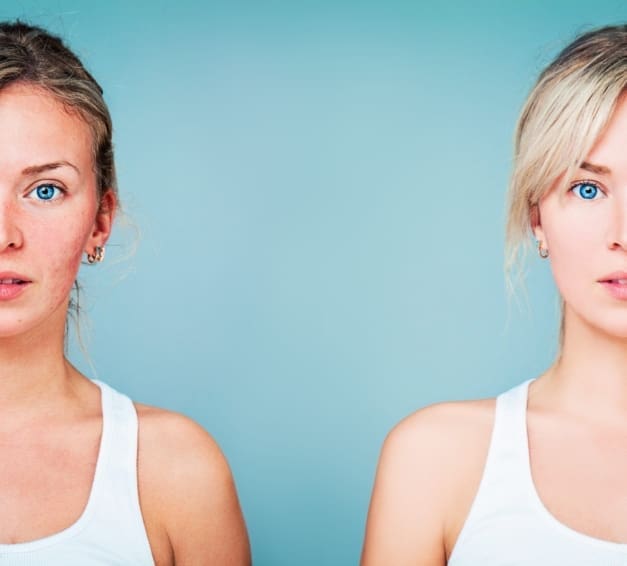
What is rosacea?
Rosacea is a common skin condition that occurs on the face. It causes redness and small bumps that are similar to acne.
Symptoms of rosacea
The first sign of rosacea often is redness. It may appear like a blush or sunburn across your nose, cheeks, forehead, or chin. Other symptoms include red or pus-filled bumps and small blood vessels. For some people, the skin of their nose may become red, thick, and swollen. This is caused by excess tissue and called rhinophyma. Rosacea also can affect your eyes, making them red or watery. It may irritate and inflame your eyelids and the white part of your eye. This is called conjunctivitis.
What causes rosacea?
The exact cause of rosacea is unknown. Possible causes include defects in the immune, nervous, or vascular systems. It tends to run in families. People who are fair-skinned and blush easily are more likely to have it. Symptoms often begin in adults between 30 and 60 years of age. Women get rosacea more on the cheeks and chin, while men are more likely to have rhinophyma. The condition tends to be more severe in men.
Diagnosis
Contact your doctor if you have signs of rosacea. They may refer you to a dermatologist, who specializes in skin conditions.
Can rosacea be prevented or avoided?
Since the cause of rosacea is unknown, you cannot prevent it. However, there are things you can do to avoid flare-ups. These include changes to your lifestyle and environment. Triggers vary by person and may take time to identify. Common triggers include:
- Direct or indirect heat, such as the sun or hot baths
- Weather, such as hot or freezing temperatures and strong winds
- Harsh skin care products
- Exercise or sweating
- Stress or anxiety
- Alcohol
- Certain foods
- Menopause
- Other skin or health conditions
Rosacea treatment
Medicine is the most common form of treatment for rosacea. The type of medicine your doctor recommends will depend on your symptoms. Medicines may include special antibiotics in the form of pills, gel, or cream. These work well at improving pimples and bumps. Skin redness is harder to treat.
It may take 2 months or more for treatment to work. As your symptoms improve, the amount of medicine you take may be cut down or stopped. It is hard to know how long you will need treatment. Each person’s skin is different, and your doctor may want to adjust your treatment.
For severe cases, surgery may be an option. It is most often done to treat rhinophyma. Enlarged blood vessels on your face can sometimes be removed with a fine electric needle or laser surgery.
Living with rosacea
Rosacea cannot be cured, but treatment can help relieve symptoms and improve skin appearance. Remember to always wear sunscreen. Avoid known triggers to prevent flare-ups. If left untreated, this condition can get worse over time. This can have emotional and social effects. Some people lose self-esteem and don’t like to be seen in public because of the way they look. It is important to work with your doctor to treat symptoms and improve your quality of life.
Questions to ask your doctor
- How do I know if I have rosacea?
- What treatment is best for me and how does it work?
- How long does treatment last?
- Is it possible that my rosacea will go away on its own?
- How do I keep my symptoms from flaring up?
- What skin care routine is best for me?
- Will I always have this condition?
Resources
![]()
Copyright © American Academy of Family Physicians
This information provides a general overview and may not apply to everyone. Talk to your family doctor to find out if this information applies to you and to get more information on this subject.









